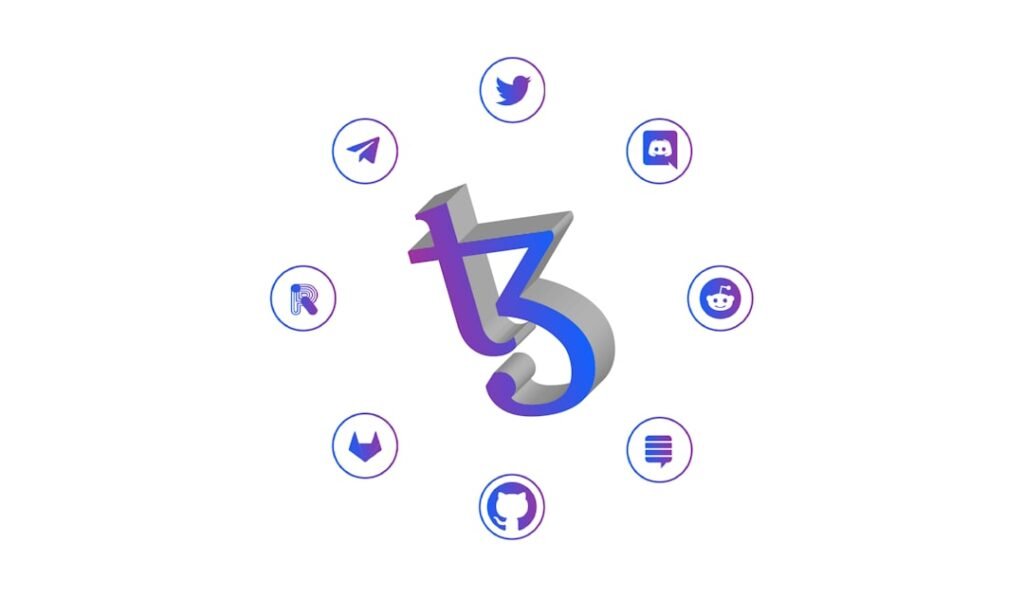The Ultimate Guide to Enterprise Blockchain Wallets: Multi-Signature Security and Corporate Governance In the rapidly evolving world of digital assets, enterprises face a critical challenge: how to securely manage cryptocurrency holdings while maintaining proper corporate controls. Traditional single-key wallets present unacceptable risks for organizations, where a single point of failure can lead to catastrophic financial losses. This is where enterprise-grade blockchain wallets with multi-signature security and corporate governance tools become indispensable. Understanding Multi-Signature Wallet Technology Multi-signature (multisig) wallets represent a fundamental shift in how organizations manage digital assets. Unlike traditional wallets that require only one private key for transaction authorization, multisig wallets demand multiple approvals from designated parties before any transaction can execute. The technology operates on a straightforward principle: M-of-N approval. For instance, a 2-of-3 configuration means three individuals hold signing privileges, but only two approvals are necessary to validate a transaction. This approach eliminates single points of failure and establishes crucial checks and balances within an organization's financial operations. Multisig wallets function through smart contracts on blockchain networks like Ethereum or through specialized protocols on other chains. When a transaction is initiated, it enters a pending state until the required number of authorized parties provide their cryptographic signatures. This process ensures that no single employee can unilaterally move company funds, significantly reducing risks of internal fraud or external coercion. The Corporate Governance Imperative For enterprises, proper governance extends beyond basic security. Corporate governance tools integrated with blockchain wallets provide the framework for managing digital assets with the same rigor applied to traditional financial instruments. Role-based access control stands as a cornerstone of enterprise wallet governance. Organizations can designate specific permissions to different team members based on their responsibilities. Treasury managers might initiate transactions, while C-suite executives hold approval authority, and auditors maintain view-only access for monitoring purposes. This segregation of duties mirrors traditional corporate financial controls. Approval workflows represent another critical governance feature. Enterprises can establish hierarchical approval processes where transaction thresholds trigger different authorization requirements. A small payment might require only departmental manager approval, while larger transfers might need executive committee consensus. These automated workflows ensure compliance with corporate policies without creating operational bottlenecks. Comprehensive audit trails provide transparent records of all wallet activities. Every transaction attempt, approval, rejection, and configuration change gets permanently recorded on the blockchain, creating an immutable history that simplifies regulatory compliance and internal auditing processes. Key Features of Enterprise-Grade Wallets When evaluating blockchain wallet solutions for corporate use, several features distinguish enterprise-ready platforms from consumer-grade alternatives. Multi-Chain Support: Modern enterprises typically hold assets across multiple blockchain networks. A robust enterprise wallet should support major protocols including Ethereum, Bitcoin, Solana, Polygon, and other emerging ecosystems. This eliminates the need to manage separate wallets for different blockchain holdings. Transaction Monitoring and Alerting: Real-time monitoring systems can detect unusual activity patterns and immediately notify security teams. Customizable alerts can trigger based on transaction size, destination addresses, or frequency of activity, enabling proactive security responses. Integration Capabilities: Enterprise wallets must seamlessly integrate with existing financial systems, including ERP software, accounting platforms, and treasury management systems. API-driven solutions allow automated data synchronization, reducing manual reconciliation efforts and improving operational efficiency. Disaster Recovery Protocols: Comprehensive backup and recovery mechanisms ensure business continuity even if primary access methods are compromised. These may include distributed key sharding, hardware security module (HSM) integration, or third-party custody partnerships. Regulatory Compliance Features: Built-in compliance tools help organizations adhere to KYC/AML regulations, tax reporting requirements, and financial controls. Some solutions offer transaction monitoring with sanction screening and automated reporting capabilities. Implementation Considerations for Organizations Successfully deploying an enterprise blockchain wallet requires careful planning across technical, operational, and human dimensions. The first step involves conducting a thorough risk assessment to determine the appropriate multisig configuration. Factors to consider include the organization's size, transaction volume, asset diversity, and regulatory obligations. A small startup might implement a 2-of-3 setup among founders, while a large corporation might require a 5-of-7 configuration across geographically distributed executives. Key management represents perhaps the most critical implementation consideration. Enterprises must establish secure procedures for generating, storing, and backing up private keys. Best practices often involve using hardware security modules, distributed key generation ceremonies, and secure offline storage for backup seeds. Employee training and clear policy development ensure that team members understand their roles and responsibilities within the wallet governance structure. Documentation should outline approval workflows, transaction limits, emergency procedures, and escalation protocols for unusual circumstances. Regular security audits and penetration testing help identify vulnerabilities before malicious actors can exploit them. Many organizations engage third-party security firms to conduct comprehensive reviews of their blockchain wallet implementations, including smart contract audits for custom solutions. Real-World Enterprise Use Cases The application of multisig wallets with corporate governance extends across various industries and operational models. Decentralized Autonomous Organizations (DAOs): These blockchain-native entities rely heavily on multisig wallets to manage treasury funds. Community proposals typically require member voting, with executed transactions needing multiple signers from elected representatives. This ensures democratic control over organizational resources while maintaining security against unauthorized access. Cryptocurrency Exchanges and Financial Services: Institutions handling customer funds implement sophisticated multisig arrangements to secure hot and cold wallets. Transactions often require approvals from geographically dispersed team members, with additional controls like time delays for large transfers. These measures protect against both external attacks and internal collusion. Traditional Corporations Treasury Management: As more companies add digital assets to their balance sheets, they're adopting multisig wallets for corporate treasury management. Typically, transactions require approvals from CFO, treasurer, and possibly board members, mirroring traditional banking authorization processes. Startup Fund Management: Venture capital firms and startups use multisig wallets to securely manage raised capital. Investors often receive viewing rights to ensure transparency, while spending requires approvals from both company executives and investor representatives. Emerging Trends in Enterprise Wallet Technology The enterprise wallet landscape continues to evolve with several notable trends shaping future developments. MPC (Multi-Party Computation) technology represents an advancement beyond traditional multisig approaches. Instead of requiring multiple discrete signatures, MPC allows multiple parties to collaboratively generate signatures without any single party ever possessing the complete private key. This technology offers enhanced security and flexibility for enterprise implementations. DeFi integration capabilities are becoming standard features in enterprise wallets. Organizations increasingly seek to earn yield on digital asset holdings through decentralized finance protocols. Enterprise wallets with built-in DeFi connectivity allow controlled participation while maintaining governance oversight. Smart account abstraction on networks like Ethereum enables more sophisticated transaction flows. Enterprises can implement features like spending limits, automated recurring payments, and fraud detection algorithms directly at the wallet level. Regulatory technology integration helps organizations navigate increasingly complex compliance landscapes. Some enterprise wallet providers now offer built-in tools for tax calculation, transaction reporting, and regulatory compliance monitoring. Selecting the Right Enterprise Wallet Solution Choosing an appropriate wallet solution requires careful evaluation of organizational needs against available features. Security should remain the primary consideration. Enterprises should examine the cryptographic techniques employed, key management methodologies, and security audit histories of potential providers. Open-source solutions often provide greater transparency but may require more technical expertise to implement properly. Usability and integration capabilities significantly impact operational efficiency. The wallet interface should be intuitive for non-technical team members while offering powerful features for treasury managers. Pre-built integrations with accounting software, ERP systems, and other business tools can dramatically reduce implementation timelines. Vendor stability and support services become crucial when entrusting significant assets to a technology provider. Enterprises should evaluate the company's track record, financial stability, customer support responsiveness, and disaster recovery capabilities. Cost structure understanding is essential for budgeting purposes. Some providers charge subscription fees based on transaction volume or assets under management, while others employ different pricing models. Enterprises should clearly understand all potential costs before commitment. Future Outlook As blockchain technology continues maturing and digital asset adoption grows among enterprises, the demand for sophisticated wallet solutions with robust governance features will accelerate. We can expect continued innovation in security methodologies, user experience design, and regulatory compliance tools. The convergence of traditional financial controls with blockchain-native security models will create new paradigms for corporate digital asset management. Enterprises that proactively implement these solutions position themselves to safely capitalize on the opportunities presented by the evolving digital economy. The transition from experimental technology to enterprise-grade infrastructure represents a significant milestone for blockchain adoption. Multi-signature wallets with comprehensive corporate governance tools now provide the security, control, and transparency necessary for serious organizational use. As regulatory frameworks continue developing and institutional confidence grows, these solutions will become standard components of corporate treasury management worldwide. For forward-thinking organizations, implementing robust blockchain wallet infrastructure today represents not just a security measure, but a strategic investment in future financial capabilities. The organizations that master these tools earliest will gain competitive advantages in the increasingly digital global economy.












